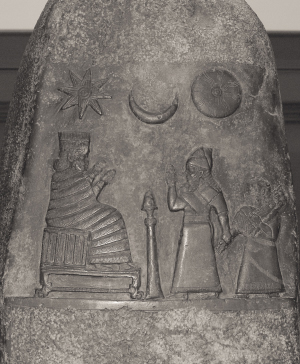Appointed Times and Offerings (28:1—29:40)
Appointed time (28:2). Most ancient Near Eastern cultures held annual agricultural festivals celebrating the gifts of the gods and goddesses in the flocks, herds, and grain in the spring, and wine and oil in the fall.266 From Ugarit comes the annual fall festival for the offering of new wine,267 and perhaps other cyclical festivals as well. In the Hittite Instructions to Priests and Temple Officials, the firstfruits of animals and grain were presented “for the pleasure of the gods.”268 In texts from Emar of upper Mesopotamia a six-month ritual calendar is outlined, beginning with the zukru festival in the fall month of Zarati and extending to the spring. During the Emar rituals, sacrifices of sheep, grain (bread), and beer (strong drink) are listed.269
The Israelite cycle of holy days combines the agricultural calendar with that of the dynamic of God’s acts in history. Daily, monthly, and annual offerings are prescribed for purification and atonement, consecration, and celebration in the covenant relationship between God and his people. The Gezer Calendar delineates eight periods in the twelve-month cycle for various harvest periods in ancient Israel, beginning with the fall harvest of the olive orchards.270
Fermented drink (28:7). The addition of one-fourth hin of strong drink (šēkār, see comments on 6:3) completes the collection of agricultural products that combine to produce a savory smell when consumed by fire. Wine and other fermented liquids were considered special gifts from God (or the gods) in the ancient Near East and thus were to be reciprocated as part of the array of sacrifices.271
On the first of every month (28:11). Lunar calendars dominate the time reckoning measurements in the ancient Near East, and the New Moon festival held an important place in the cycle of religious observances. In northern Mesopotamia the moon god Suen (Sin) was honored, and in Emar the New Moon of Dagan was celebrated by drinking wine and burning birds.272 Ram’s horns and/or trumpets were sounded over the burnt offerings (10:10; Ps. 81:3) on Rosh Ḥodesh, and commerce was suspended (Amos 8:5).
During the eighth century B.C., this celebration and other rituals became contemptible in the eyes of Yahweh because of social injustice and religious idolatry in the nation (Isa. 1:13; Hos. 2:11). The lunar month set the sequence of the annual holy days and festivals (e.g., “on the first day of the seventh month”—Lev. 23:23). The sizable quantity of sacrificial elements offered on this day bespeaks the status of the holiday for the Israelite community.

Moon god Sin (patron deity of Ur) is represented as the crescent on this kudurru as the King Meli-shipak presents his daughter before the goddess Nanaya.
Marie-Lan Nguyen/Wikimedia Commons, courtesy of the Louvre
Feast of Weeks (28:26). Originally called the Feast of Harvest (Ex. 23:16), the Festival of Shavuoth (Weeks) celebrated the completion of the grain harvest season begun at Passover/Unleavened Bread. The early barley harvest bore a direct connection to the end of the wheat harvest by the counting of the omer grain offering during the fifty-day period. The celebration also included the offering of two loaves of new grain baked with yeast as a sign of the fullness of God’s blessing in comparison to the earlier week-long consumption of unleavened bread, the sign of poverty and affliction (Lev. 23:15–22; Deut. 16:3).
Shavuoth included a goat for a sin (purification) offering and was also designated as a Sabbath. The timing of the two feasts in the first and third months led to the association of Shavuoth with the giving of the Law on Mount Sinai (Ex. 19:1). Unlike most holy days, this festival was not connected to the lunar calendar cycle. For the messianic Qumran sectarians, the festival was the most important of their solar calendar year and given the name “Feast of the Renewal of the Covenant” (4Q266 fr. II.2; 4Q270 fr. 7.11; 11QTemple 18.1-25.1).273
The fifteenth day of the seventh month (29:12). This was the Feast of Tabernacles (Sukkoth). The sukkâ was a hut or tent constructed during the wilderness period to protect from the elements of the desert. First called the Feast of Ingathering, the celebration commemorated God’s provision in the fall harvest of the vegetable crops, vineyards, and olive orchards.
Such a celebration was common among ancient Near Eastern cultures, such as the Emar zukru (“remembrance”) rituals on the eighth and fifteenth days of the seventh month of Zarati.274 When the Israelites settled the Promised Land, they were to imitate their ancestors by building a sukkâ adjacent to their homes and live in it during the seven days of the festival (Lev. 23:39–43), to remind them of God’s protection and provision during the forty-year sojourn. The association of Sukkoth with the Exodus from Egypt provided a continuation of the salvation-redemption-providence-preservation motifs of Passover, Unleavened Bread, and Pentecost.